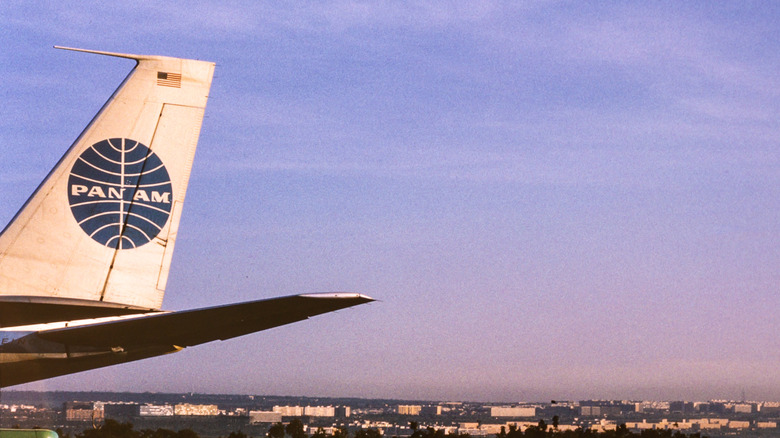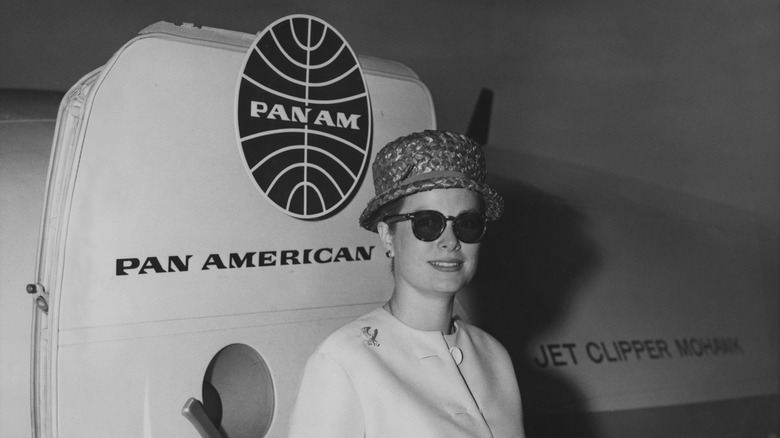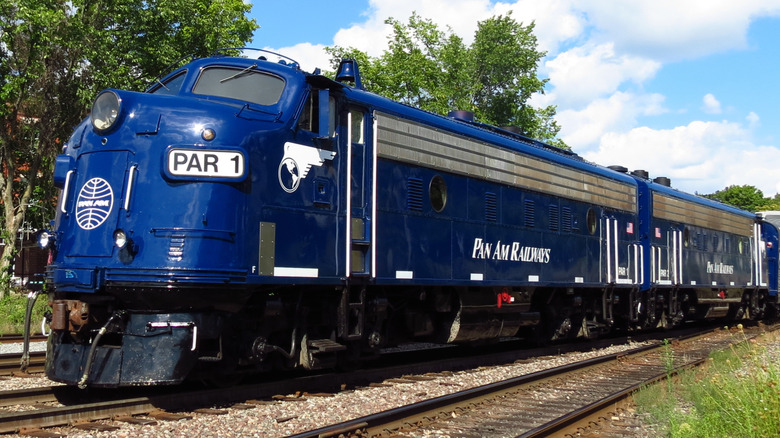What Happened To Pan Am, And Who Owns The Name Now?
Pan Am went out of business in 1991, but the iconic brand has never fully gone away. In June 2025, travelers made a return trip across the Atlantic aboard a specially outfitted, Pan Am-liveried Boeing 757. The trip was a collaboration between travel companies Criterion Travel and Bartelings Associates, who partnered with Pan American World Airways LLC, the company that owns the Pan Am brand. This exclusive and very expensive 'Tracing the Transatlantic' tour recreates a time when flying was glamorous, and Pan American World Airways was the epitome of international adventure. While this was more of a themed experience than a relaunch of Pan Am Airways, it shows that there is still a lot of love for the brand. Tickets cost around $60,000 a head, although the eye-watering price did include hotel stays, food, drink, and — perhaps most excitingly of all — an "exclusive branded swag bag."
Pan Am is no stranger to branded swag. There's clothing, luggage, and even a Barbie doll released in 2009. However, Pan Am may soon be doing more than just licensing deals with other companies. Pan Am is considering a comeback. In June 2025, aviation investment firm AVi8 Air Capital announced they were working with Pan Am "to explore the relaunch of Pan American World Airways as a scheduled commercial airline." Don't start planning your Pan Am flight yet. At the moment, the companies are just looking into the idea and may well conclude that it isn't feasible after all. But there is hope that the iconic airline might fly again and maybe even put its troubled past behind it.
From global domination to bankruptcy: a quick history of Pan Am
Pan American World Airways was founded in 1927 and was the first U.S. airline to operate a permanent international air service, the first airline to offer commercial flights across the Pacific, and the first to adopt groundbreaking aircraft like the Boeing 707 and later the 747. These innovations made global travel faster, more accessible, and, in Pan Am's case, incredibly stylish. From the 1950s through the early 1970s, Pan Am embodied the Jet Age. However, things changed in the 1970s. First came the oil crisis of 1973. Soaring fuel prices drove up operating costs across the industry, but international carriers, like Pan Am, were hit especially hard. In 1978, the new Airline Deregulation Act meant that airlines were free to set their own prices and enter new markets. Before deregulation, the federal government tightly controlled routes, fares, and competition, which had worked in Pan Am's favor.
To stay afloat, Pan Am began selling off prized assets, like its Pacific routes and prestigious Manhattan headquarters. Then came tragedy. In 1988, Flight 103 exploded over Lockerbie, Scotland. Terrorists had placed a bomb in its cargo hold. All 259 people on board and 11 on the ground were killed. Pan Am was responsible for serious lapses in the security procedures that should have prevented the bag containing the bomb from ever being loaded onto the plane. The ensuing lawsuits accelerated the company's downfall. On December 4, 1991, Pan Am flew its final flight, and it was the end of an aviation era.
The Pan Am brand has had a few owners over the years
Pan Am's intellectual property rights are currently owned by Pan Am Brands, which is the trading name for the company Pan American World Airways, LLC. Craig Carter was appointed CEO in 2024, and, according to his LinkedIn profile, he's eager "to propel Pan American World Airways into an exciting new chapter of growth and innovation." In the time since Pan Am declared bankruptcy in 1991, several different companies have owned or partially owned the brand name and logo.
There have been several short-lived attempts to revive Pan Am Airways. The first was in 1996, when former U.S. Ambassador Charles Cobb and former Pan Am vice president relaunched the airline, offering low-cost domestic flights. However, the venture struggled financially from the beginning and ceased operations in 1998 when it was sold to Guilford Transportation. The company rebranded itself as Pan Am Railways, adopting the airline's livery and branding for its locomotives and corporate identity. It also launched a short-lived Pan Am airline, which folded in 2004. Pan Am Railways continued until 2022, when it was purchased by railroad company CSX Transportation.
Although the two previous attempts to replicate the success of the original Pan Am airline may not have been successful, with the Pan Am brand back the under ownership of Pan American World Airways, perhaps the third time is a charm. The latest relaunch — while still only in the research phase — is actively recruiting staff who are "passionate about aviation and eager to be part of this historic revival".


